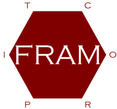the FUNCTIONAL RESONANCE
ANALYSIS METHOD
Modelling Processes versus Modelling Functions
Process models
A process model is a (formal) description of how a specified activity takes place. The activity can be a power plant, a business, a distribution network, a production line, etc. Process models are often created in order to analyse an activity and/or in order to simulate it. A process can be defined as a series of actions or steps taken in order to achieve a particular end. A process model therefore obviously incudes the functions (actions) necessary to carry out the activity. The process model describes the functions and the way they have been organised to achieve their purpose. The organisation, the intended sequence of the functions, is crucial since it is the prescription for safe and efficient performance.
Function models
A FRAM model is a (formal) description of the functions that are needed to carry out a specified activity. (In some cases it may also be the functions that habitually are used to carry out a specific activity.) The descriptions of the functions makes it possible to analyse how functions potentially depend on each other, and how these potential dependencies may become actual in specified circumstances. The FRAM represents how the functions could become organised, but not how they actually are organised, as in a sequence of actions. The FRAM can therefore be used to analyse whether the intended performance is possible or not, as well as the possible consequences of various forms of variability of the functions.
